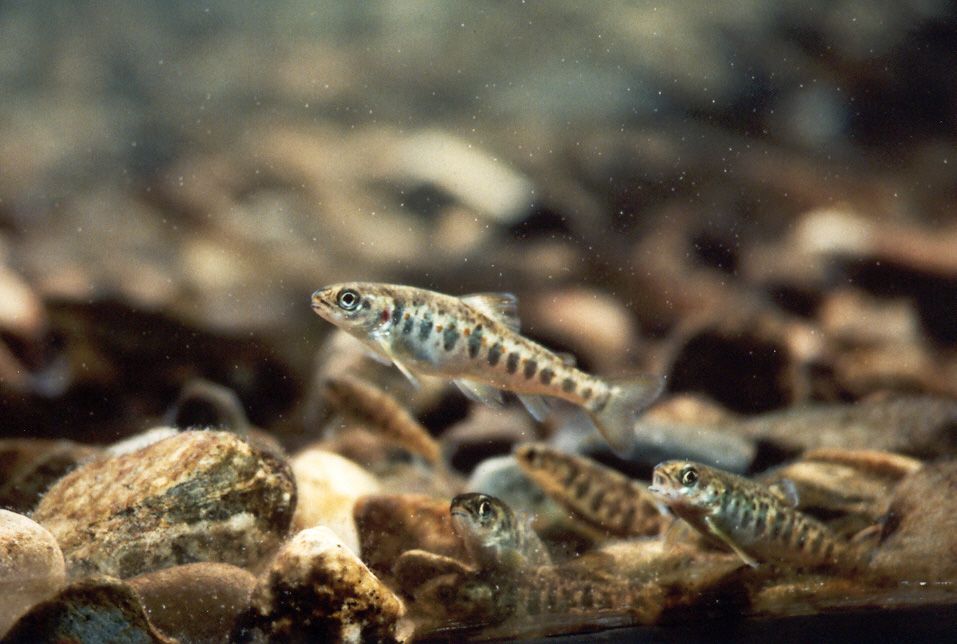“Ensuring freshwater ecosystems are well managed, remain free-flowing with sufficient water, and good water quality is essential to stop species declines… in a climate-resilient world,” one scientist said.
By Olivia Rosane. Published 12=11-2023 by Common Dreams

More than 20% of the world’s freshwater fish species are in danger of extinction, according to the first-ever assessment of the category by the International Union for Conservation of Nature.
The assessment was released Monday as part of an update to the IUCN Red List of Threatened Species published to coincide with the United Nations Climate Change Conference (COP28). It found that 3,086 out of 14,898 listed freshwater fish species are at risk of disappearing, and at least 17% of threatened fish species are impacted by the climate crisis.
Barney Long, Re:wild’s senior director of conservation strategies, said it was “shocking” that such a large percentage of “freshwater fish are now threatened with extinction and that climate change is now recognized as a significant contributing factor to their extinction risk.”
The climate crisis can harm freshwater fish by altering seasonal rhythms, lowering freshwater levels, and increasing saltwater intrusion into freshwater ecosystems as sea levels rise. These changes only exacerbate the dangers freshwater fish already face: 57% of at-risk species are threatened by pollution, 45% by dams and water extraction, 33% by disease and invasive species, and 25% by fishing.
“Freshwater fishes make up more than half of the world’s known fish species, an incomprehensible diversity given that freshwater ecosystems comprise only 1% of aquatic habitat,” Kathy Hughes, co-chair of the IUCN Species Survey Commission Freshwater Fish Specialist Group, said in a statement. “These diverse species are integral to the ecosystem, and vital to its resilience. This is essential to the billions of people who rely upon freshwater ecosystems, and the millions of people who rely on their fisheries.”
One example of a fish important to humans that is now at risk is Kenya’s large-toothed Lake Turkana robber (Brycinus ferox). This species moved from “least concern” to “vulnerable” on the Red List because of dams, overfishing, and climate change-driven drought.
Another example is the Atlantic salmon, which has seen a “significant overall decline” in its population since around the turn of the 21st century, according to IUCN. This prompted the conservation body to revise its status from “least concern” to “near threatened.” Atlantic salmon face a number of threats including dams, runoff pollution from logging and agriculture, diseases from farmed fish, overfishing, and the climate crisis.
“It appears that global climate change, resulting in rising sea, stream, and air temperatures, is a major driver acting on a wide range of factors influencing the Atlantic Salmon’s life cycle,” one study concluded.
It can do this by driving up stream and river temperatures so that they are too hot for fish to survive; increasing the range of invasive species; prompting fish to migrate early, which can decreases their chances of survival; and reducing prey availability, among other factors.
BREAKING NEWS: Freshwater fish highlight escalating #climate impacts on species – @IUCNRedList https://t.co/zjuP0PWPlk#COP28 pic.twitter.com/qyhJv0T7FW
— IUCN (@IUCN) December 11, 2023
The overall Red List update also warned of the impacts of the climate crisis on species generally. For example, the Central South Pacific and East Pacific green turtles are now considered “endangered” and “vulnerable” respectively. The climate crisis adds to the stress on these animals by harming the seagrass they eat, threatening to flood nests with sea-level rise, and warming temperatures to an extent that decreases hatching success.
“Climate change is menacing the diversity of life our planet harbors, and undermining nature’s capacity to meet basic human needs,” IUCN director generalGrethel Aguilar said in a statement. “This IUCN Red List update highlights the strong links between the climate and biodiversity crises, which must be tackled jointly. Species declines are an example of the havoc being wreaked by climate change, which we have the power to stop with urgent, ambitious action to keep warming below 1.5°C.”
Conservationists emphasized the importance of protecting freshwater ecosystems in particular.
“Ensuring freshwater ecosystems are well managed, remain free-flowing with sufficient water, and good water quality is essential to stop species declines and maintain food security, livelihoods, and economies in a climate-resilient world,” Hughes said.
Long agreed: “It is critical that we better safeguard our freshwater systems as they are not only home to precious and irreplaceable wildlife, but also provide humans with so many services that only the natural world can.”
This work is licensed under Creative Commons (CC BY-NC-ND 3.0).

